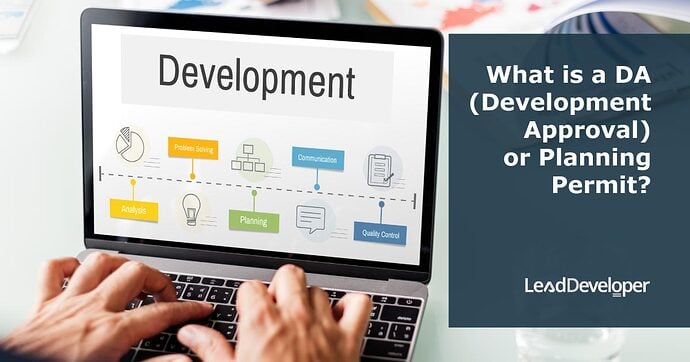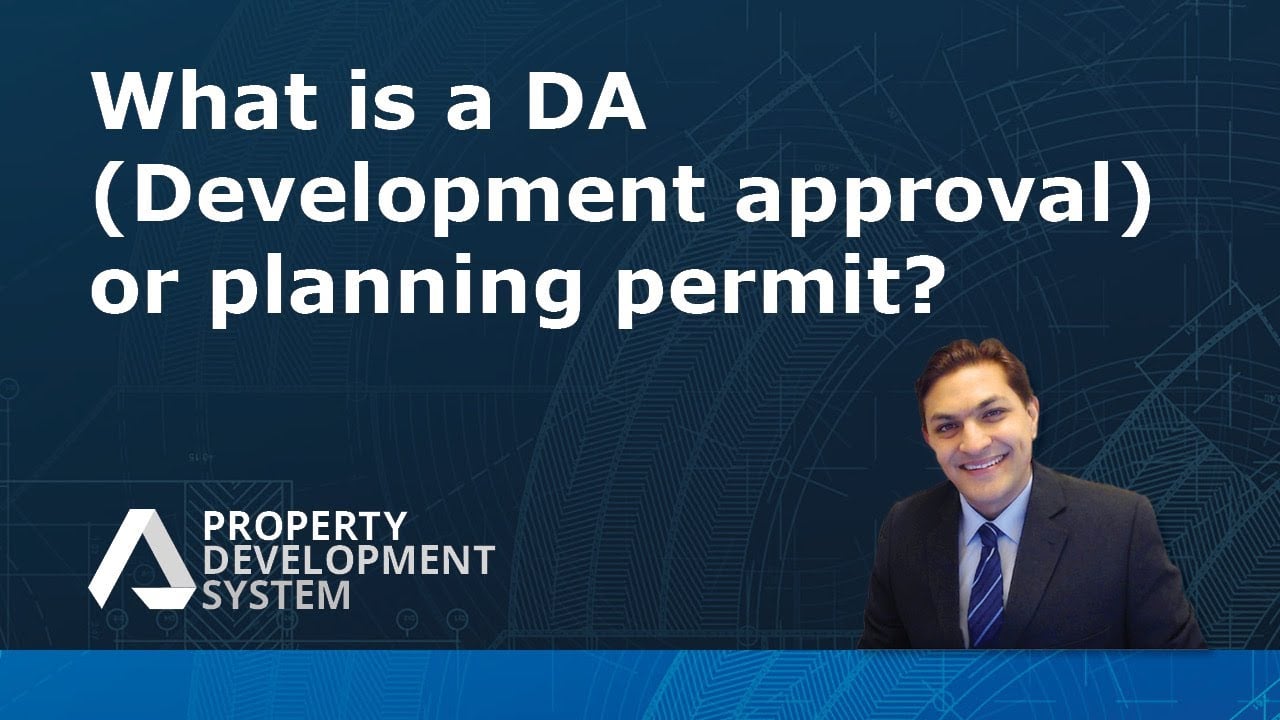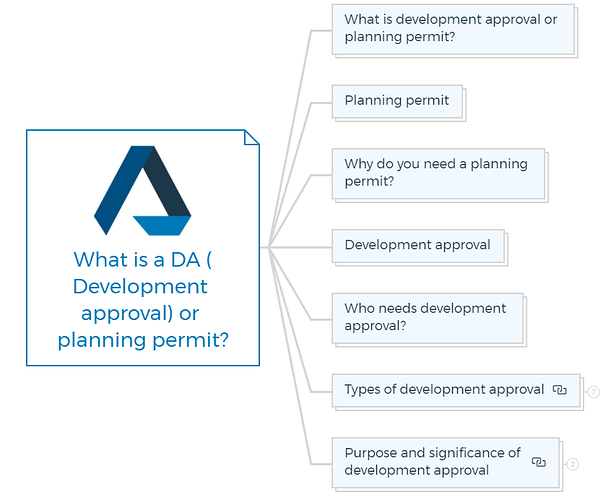What is a DA (Development Approval) or Planning Permit
In urban development and construction, obtaining the necessary approvals and permits is crucial to ensure compliance with regulations and promote sustainable growth. Two commonly used terms in this context are development approval and planning permit.
What is development approval or planning permit?
Development Approval (DA) and Planning Permit are two terms used interchangeably to refer to the legal authorisation granted by a local government or planning authority for certain development activities within a designated area.
They are the same thing, differing only in terminology based on regional or jurisdictional preferences.
A planning permit authorises the use and development of land by assessing proposals against council planning schemes and the State’s planning legislation.
For every major project, there’s a requirement for development approval with a significant impact on the specific property and general land.
Development approval is a prerequisite for both commercial and residential property development. Also, you will be required to apply if you intend to reconfigure a lot or install utility networks.
You are missing out if you haven’t yet subscribed to our YouTube channel.
Planning permit
It particularly examines the impact of the proposed development or use on the surrounding area, whereas building permits focus on the proposed structure, its safety, and amenity.
Each council has a local planning scheme that describes (or more like permits) which types of activities may occur in different areas of the municipality, circumscribed within the statewide planning laws.
Many activities require planning permission issued by the council in the form of planning permits. A planning permit allows the development of land or the specific use of property, sometimes even both.
Councils work with the government, allying to provide Urban Design Guidelines to control land use, as well as to develop a planning scheme.
One of the significant responsibilities carried out by working together is defining the laws and approval of planning permits under the planning scheme. Moreover, they even look after the preparation and consultation of the proposed changes to the planning scheme.
Why do you need a planning permit?
A planning permit is required for property development if stated by the laws in the planning scheme. The planning scheme specifies whether the planning permit is required or not for the development.
In a few cases, it can be exempted if the planning scheme allows. Ensure you can accurately identify the property in question – usually, the street address and nearest intersection are sufficient. It may be necessary for a search to be made of the permit history, and if a written response is required, a fee may be charged.
Below mentioned are some basic activities for which you may require to obtain a planning permit:
- Open a restaurant, cafe, bar or tavern
- Install a satellite dish
- Extend your home
- Change the use of land or buildings
- Display a sign
- Reduce required car parking spaces
- Develop in rural areas
- Start a business
- Prune or remove a tree
- subdivide land
- build two or more dwellings (units/townhouses)
- remove or vary a covenant/restriction
It starts from post-acquisition and continues until construction. Moreover, a proficient planning permit document includes Design, Cost Estimates, Financing, Market Analysis, Financial Feasibility, Project Schedules etc.
In a few cases, when a council grants a planning permit to the authorised party, there can be some objections raised by the affected people. The council is supposed to consider all the objections and complaints from the affected property owners while revising the decisions.
The careful examination of such development activities allows the [Local Planning Authorities (LPAs)](Local planning authority - Wikipedia and the Government to make sure that any new construction, developments or extensions, change of use and such operations are carefully examined and controlled to make sure that no one defies the rules to build whatever they feel like.
Development approval
When an application is filed, the council assesses it under all the applicable laws, codes, and criteria before deciding (approval or rejection). These codes and restrictions include neighbourhood security, zone, overlays, and prescribed secondary codes.
Additionally, the future impact of the development will be considered before approval.
The planning act of 2016 required a development application to be submitted for development approval.
Development is defined in Schedule 2 of the Planning Act 2016:
- Carrying out building work
- Carrying out plumbing or drainage work
- Carrying out operational work
- Reconfiguring a lot (i.e. a subdivision)
Making a material change of use of premises (i.e. starting a new use, re-establishing a use that has been abandoned or changing the intensity or scale of the use).
Who needs development approval?
Anyone planning development activities such as constructing new buildings, modifying existing structures, changing land use, or making substantial renovations typically requires development approval.
This includes property owners, developers, businesses, and individuals looking to undertake significant changes to the built environment.
Types of development approval
The specific types of development approval can vary depending on the jurisdiction and the nature of the proposed development.
Residential development approval
New houses, apartments, townhouses, and developments require this approval.
Commercial development approval
Offices, retail outlets, shopping centres, hotels, and industrial facilities need commercial development approvals.
Industrial development approval
Manufacturing, processing, and industrial developments require industrial development clearances. Factory, warehouse, distribution centre, or specialised industrial facilities.
Subdivision approval
Subdividing a large tract of land into smaller lots for residential, commercial, or industrial use requires approval. It enforces lot sizes, access, utilities, and infrastructure rules.
Heritage conservation approval
Projects involving heritage-listed buildings or sites require heritage conservation approvals. They ensure that proposed changes or restorations respect the heritage property’s historical, cultural, or architectural Significance.
Environmental Impact Assessment (EIA) approval
Large infrastructure projects, mines, and industrial facilities may need EIA approval. This involves identifying environmental problems and taking steps to mitigate them.
Land use change approval
Changing land use, such as from agricultural to residential or commercial, may require approval. It ensures the intended land use meets zoning and planning goals.
Purpose and significance of development approval
Development approval serves multiple purposes that contribute to urban development’s effective and sustainable management. Here are some key reasons why it is essential:
Ensuring compliance with regulations
Development approval guarantees that planned projects comply with municipal planning standards, which promote safety, aesthetics, and sustainability.
It encourages standardisation and prevents unplanned development.
Balancing interests
Development approval balances the needs of inhabitants, businesses, and the community. It promotes peaceful coexistence by considering land use, traffic, environmental concerns, and heritage preservation.
Development approval helps planning authorities plan and distribute resources. They can evaluate how proposed projects will affect infrastructure, including roads, utilities, schools, and hospitals, to meet community needs.
Test Your Knowledge
Assignment: Understanding Development Approval and Planning Permit Processes
Objective:
This assignment aims to deepen your understanding of Development Approvals (DA) and Planning Permits, which are crucial aspects of urban development and construction. Through research, analysis, and application, you will explore how these processes contribute to sustainable development and regulation compliance.
Instructions:
Complete the following tasks, ensuring to reference specific laws, regulations, or case studies where applicable. Provide comprehensive answers, incorporating your research findings and critical thinking.
Part 1: Foundations of Development Approval and Planning Permit
Define Development Approval and Planning Permit.
- Explain the purpose of each in the context of urban development.
- Highlight the differences in terminology across regions or jurisdictions, if any.
Research Task:
Investigate the development approval and planning permit process in your local municipality. Identify the key steps involved from application to issuance.
Analysis Question:
How do development approvals and planning permits contribute to sustainable urban development? Provide examples to support your answer.
Part 2: Practical Application
Case Study Selection:
Choose a recent development project in your area that required a planning permit. Describe the project and its significance.
To Do:
Outline the specific requirements that the project had to meet to obtain the planning permit. Include zoning laws, environmental considerations, and community impact assessments.
Research and Reflection:
Research any objections or controversies associated with the project’s planning permit. Reflect on how the planning authority addressed these issues.
Part 3: In-Depth Analysis
Types of Development Approval:
- Explain the different types of development approval mentioned in the article (e.g., Residential, Commercial, Industrial, Subdivision, Heritage Conservation, EIA, Land Use Change).
- For each type, provide an example of a development project and discuss the specific approvals it would require.
Research Question:
How does the planning scheme in your municipality address the development in rural areas, heritage conservation, and environmental impact? Provide specific examples.
To Do:
Create a hypothetical scenario where you are planning to develop a small commercial complex. List the steps you would take to obtain a planning permit, considering local regulations and any potential objections from the community.
Part 4: Critical Thinking
Debate Preparation:
Prepare for a debate on the statement: “The current development approval and planning permit processes hinder urban development more than they help.” Argue for or against this statement with reasons, examples, and evidence.
Reflection:
Reflect on the balance between development and regulation. Discuss how development approval and planning permits can be improved to facilitate sustainable development while ensuring compliance and community well-being.
Submission Guidelines:
- Compile your answers, research findings, and analyses in a structured document.
- Include a bibliography citing all the resources and laws referenced.
- Submit your assignment either by mail or comment.






